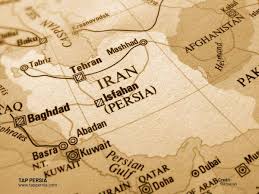The name Persia evokes images of grand palaces, ancient where is persia today? , and a rich cultural legacy that has shaped human history for thousands of years. But where exactly is Persia, and what is it known as today? To understand that, we must journey through geography, history, and culture.
The Location of Persia
Historically, Persia refers to the region that is now known as Iran. Situated in the heart of the Middle East, Iran lies in Western Asia, bordered by several countries:
- Iraq and Turkey to the west,
- Armenia, Azerbaijan, and the Caspian Sea to the north,
- Turkmenistan, Afghanistan, and Pakistan to the east,
- and the Persian Gulf and Gulf of Oman to the south.
This strategic position has made Persia a crossroads of trade, culture, and empire-building for millennia.
The Origins of the Name “Persia”
The name “Persia” comes from “Pars” or “Fars,” a region in southern Iran that was the homeland of the ancient Persian Empire. The Greeks used the term Persis to describe the entire empire ruled by the Persians, and that name was adopted by the Western world for centuries.
However, in 1935, the Iranian government requested that countries use the name Iran, which means “Land of the Aryans.” Today, both names refer to the same nation, though “Persia” is still used in historical and cultural contexts.
The Ancient Persian Empire
Persia was home to one of the greatest civilizations in history — the Achaemenid Empire (550–330 BCE). Founded by Cyrus the Great, it became the largest empire the world had ever seen, stretching from the Indus Valley to Greece and Egypt. The Persians were known for their tolerance, innovation, and remarkable administrative systems. Cities like Persepolis and Susa became centers of art, learning, and governance.
Persia’s Cultural and Historical Legacy
Persia’s influence on the world extends far beyond its borders. Persian art, architecture, poetry, and philosophy have shaped global civilization for centuries. Figures like Rumi, Hafez, and Ferdowsi remain celebrated worldwide for their timeless poetry. The Persian carpet, miniature painting, and Persian cuisine continue to symbolize elegance and craftsmanship.
The Persian language, known today as Farsi, remains a vital part of Iran’s identity and is spoken by millions across Iran, Afghanistan (as Dari), and Tajikistan (as Tajik).
Persia in the Modern World
Modern Iran is a vibrant nation that bridges its ancient heritage with contemporary society. While its political landscape has changed over time, its cultural roots remain deeply Persian. The traditions, hospitality, and artistry that once defined the Persian Empire continue to thrive, making Iran a fascinating blend of history and modernity.
Conclusion
So, where is Persia? Geographically, it is modern-day Iran, located in Western Asia. Historically, it is the cradle of one of humanity’s greatest civilizations — a land that gave the world art, philosophy, and a legacy of cultural richness that endures to this day. Persia may no longer appear on modern maps, but its spirit and influence remain very much alive.


